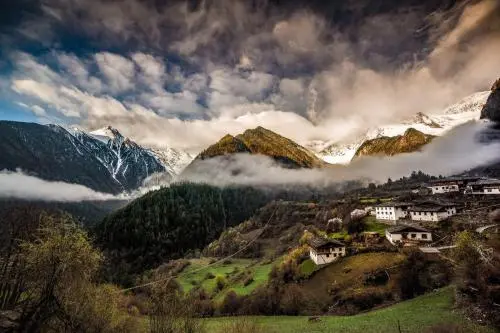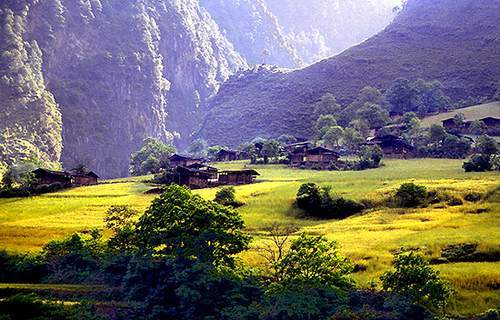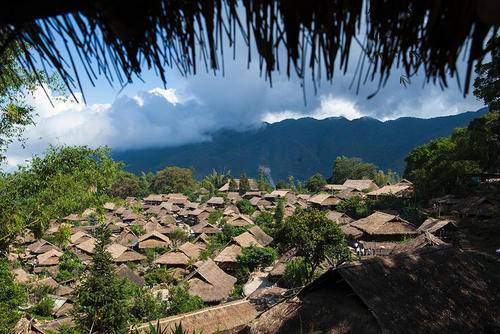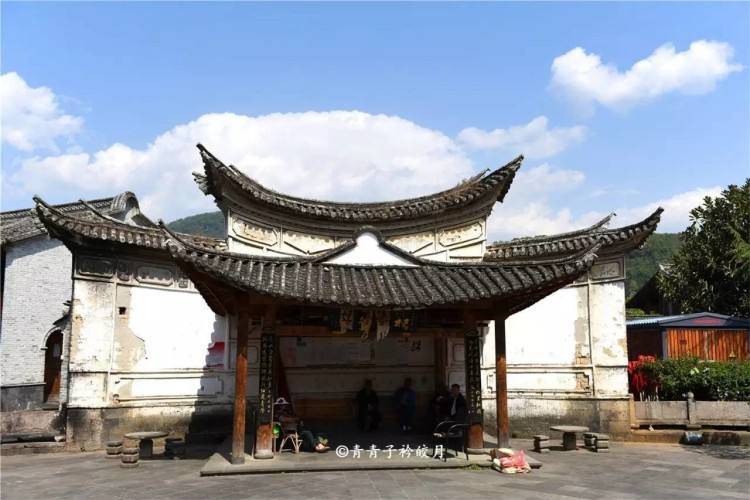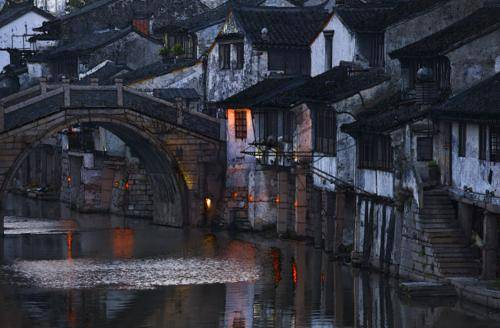Bingzhongluo Town
Bingzhongluo, renowned for its 'unity of heaven and man, coexistence of humans and gods,' is located in the northern part of Gongshan Dulong and Nu Autonomous County in Nujiang Prefecture. Here, you can stroll along ancient paths that have existed for millennia, gaze at the roaring Nujiang River through sheer cliffs and gorges, visit beautiful and elegant churches and temples, and enjoy the serene and tranquil countryside cottages, dense primordial forests, and majestic snow-capped mountains. You will be enchanted by this beautiful pastoral scenery.
Wengding Village is located in Mengjiao Dai, Yi, and Lahu Ethnic Township, Cangyuan Wa Autonomous County, Lincang City, Yunnan Province. It is currently the most well-preserved original ecological Wa village in China. Every morning and evening, the entire village is shrouded in curling smoke from cooking fires, presenting a very natural and primitive lifestyle scene. The mornings and evenings in the Wa village are adorned with beautiful cooking smoke and the enchanting interplay of light and shadows among the trees.
Heshun Ancient Town
Located in Tengchong, Yunnan, it is the largest overseas Chinese hometown in Southwest China. It has completely preserved the characteristics of Chinese Ming and Qing culture and is known as the living fossil of ancient Chinese architecture.
Shaxi Town
Located between the Dali Scenic Area and Shangri-La, Lijiang. Walking along the stone-paved Xishi Street, the buildings on both sides are full of ancient charm, as if traveling back to ancient times.
The village is located in Yunling Township, Deqin County, on the eastern slope of Meili Snow Mountain in Yunnan. It is connected to the outside world by only one mountain path. Yubeng Village is divided into Upper Yubeng Village and Lower Yubeng Village. The upper village leads to the Sino-Japanese Joint Mountaineering Base Camp for climbing Kawagebo, while the lower village leads to Yubeng Sacred Waterfall. Along the way, you can see the ancient Zhuan script, the spectacle of five trees sharing one root.
